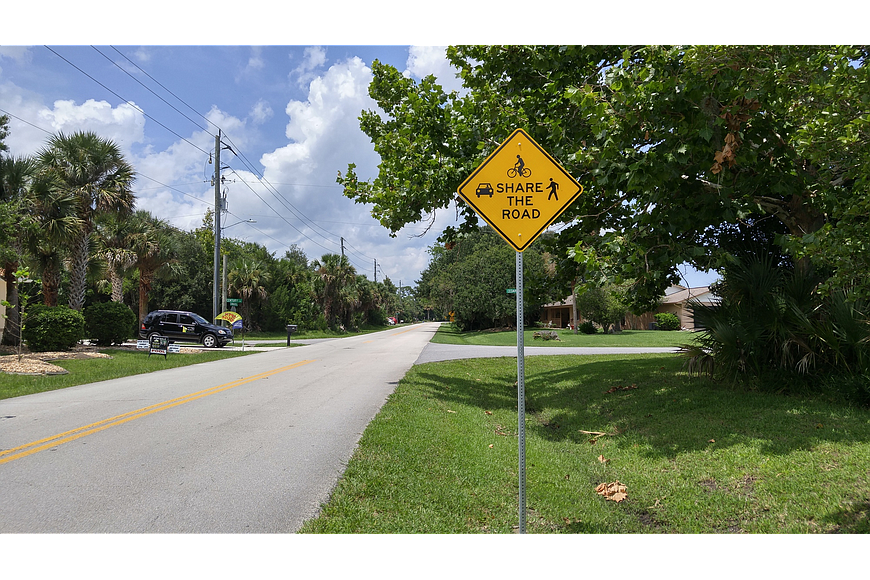- April 19, 2024
-
-
Loading

Loading

Is Palm Coast pedestrian-friendly enough? The city is evaluating roadways for possible pedestrian safety improvements.
"We're having to draw from way back in the past and fix a wrong for the future."
— DAVID ALFIN, Palm Coast mayor
Those could include adding walking paths, adding safety barriers or various interim solutions, according to a presentation at a June 14 City Council workshop.
The improvements, Mayor David Alfin said, would address a deficiency in Palm Coast's original master plan.
"We're having to draw from way back in the past and fix a wrong for the future, and learn from this lesson," Alfin said.
Since Palm Coast conducted its first pedestrian feasibility study in 2008, it's built more than 60 miles of walking and biking facilities, investing more than $10 million, said Mark Manwell of the engineering firm England-Thims & Miller.
The firm has conducted a study to design new pedestrian options for all of Palm Coast's residential collector roadways — roads that connect to an arterial or major connector on both ends, but also have residential driveways.
A little over half of the 66 roads the firm studied, totaling about 68 miles of roadway, have 60-foot rights-of way, while the rest have 50-foot rights-of-way.
There are five options, Manwell said:
"There are limited applications for each option, and there's very limited funding, if any, available to implement these improvements," Manwell warned.
That means prioritizing the projects based on roads' proximity to schools and parks, the number of residents who'd be affected by the project, connections to existing pedestrian networks, and grant funding availability.
England-Thims & Miller selected 16 roads as high priority (see the box above).
City Councilman Eddie Branquinho worried that residents might be unwilling to support any option that encroached on their property, or, through installation of a new sidewalk, shortened their driveways.
Branquinho said he'd asked one of his neighbors if he'd be willing to give up a foot and a half of property in order to increase roadway safety.
"He answered like a machine gun: 'No, no, no, no, no,'" Branquinho said.
The city's attorney noted that all of the proposed options would fall within the city's right-of-way, and wouldn't require residents to give up any land.
Councilman Ed Danko said that he was glad that the city now has a plan. But, he added, "This is not a must have. Our roads are a more serious issue that we have to confront in the next five years."
Alfin said having a plan opens up potential external funding sources.
Alfin represents Palm Coast on the River-to-Sea Transportation Planning Organization board, which advocates for project funding from the Florida Department of Transportation.
"With a plan in place, we can begin the conversation, but I don't I don't want to sugarcoat this," Alfin said. "... I have a lot of competition for these dollars, and they they tend to have lengthy timelines."
Alfin recommended trying a pilot program while having city staff come up with a parallel option "that might not be as as as complete and solve all the issues at one time, but might improve the safety of our residents in the shorter term without blowing up the budget."